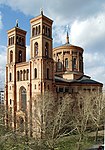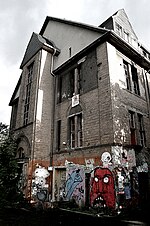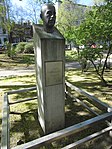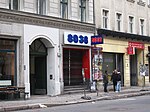Tommy Weisbecker Haus
1973 establishments in GermanyAC with 0 elementsBuildings and structures in BerlinGraffiti and unauthorised signageLegalized squats ... and 1 more
Squats in Germany
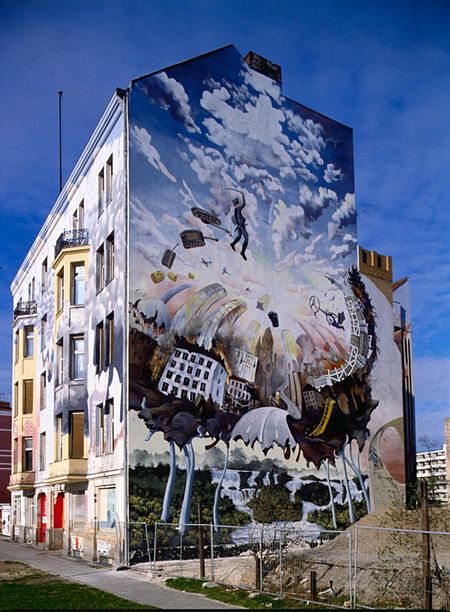
The Tommy Weisbecker Haus is a housing co-operative and self-managed social centre based in an apartment block in Kreuzberg, Berlin, Germany. It was established in 1973 when young people squatted it as an autonomous youth homeless shelter. Quickly legalized, it became a housing project and signed a new 30 year lease in 2013.
Excerpt from the Wikipedia article Tommy Weisbecker Haus (License: CC BY-SA 3.0, Authors, Images).Tommy Weisbecker Haus
Köpenicker Straße, Berlin Mitte
Geographical coordinates (GPS) Address Nearby Places Show on map
Geographical coordinates (GPS)
| Latitude | Longitude |
|---|---|
| N 52.507777777778 ° | E 13.426111111111 ° |
Address
Køpi
Köpenicker Straße 137
10179 Berlin, Mitte
Germany
Open on Google Maps

